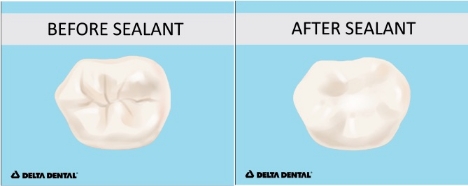
Often, parents worry about their kids’ health more than their own. Understanding how your dental benefits cover preventive procedures can help start your children on a path to a lifetime of healthy smiles.
When it comes to keeping kids’ mouths healthy, routine oral health habits – such as brushing twice a day, flossing once a day and visiting the dentist regularly – are a must. In addition to good home habits, a few in-office preventive dental procedures can also help keep kids’ teeth in tip-top shape.

Sealants.
While brushing and flossing remove plaque from the smooth surfaces of kids’ teeth, it can be difficult to get certain hard-to-reach spots. Your child’s dentist can apply sealants to help act as a barrier against plaque and acids in these vulnerable areas on the tooth’s chewing surface. It’s a simple procedure that requires no anesthesia and can be painted on each tooth in just a few minutes. Sealants are most effective when applied to permanent teeth right after they come in. Kids’ first permanent molars erupt around age 6 and the second permanent molars around age 12. Pre-molars are also prime candidates for sealants. Sealants are not always necessary for every kid, so be sure to check with your child’s dentist.

Professional fluoride treatments are applied quickly and easily as a gel, foam or varnish. The fluoride used for these treatments is higher strength than over-the-counter or prescription mouthwashes or toothpastes. As with sealants, professional strength fluoride treatments are not always necessary for every kid, so talk with the dentist to see if your child is at higher risk for tooth decay. If your child needs fluoride, your dentist can provide a fluoride plan based on their specific needs.
X-Rays.
X-rays are important tools to help the dentist keep an eye on what’s happening under the surface in little mouths. X-rays are generally safe for children, but dentists should take as few as possible to get the information they need. For children with a high risk of tooth decay, the American Dental Association and U.S. Food and Drug Administration recommend X-ray examinations every six to 12 months. Children with a low risk of tooth decay require X-rays less frequently, every 12 to 24 months. You’ll want to consult the dentist to determine how often your child needs X-rays.
Good oral health habits, along with recommended preventive dental procedures like these, will help keep children’s mouths healthy.





